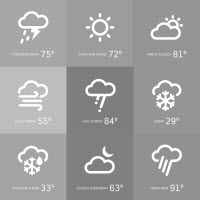For Immediate Release: March 20, 2019
Contact: Adeline Yee I Information Officer I (916) 651-8725
Deep Snowpack Expected to Create Dangerously High and Cold Swift Waters
SACRAMENTO, Calif. — With the Sierra Nevada snowpack estimated at 153 percent of average, California’s Division of Boating and Waterways (DBW) is warning water enthusiasts including anglers to take extra precautions this spring. Rivers will continue to rise as snow melts and will be dangerously cold. Simple actions such as knowing the water conditions (is it too cold or swift?), knowing your limits, wearing a life jacket and simply not entering rivers during spring runoff, can save a life.
“Even the strongest swimmers can be stunned by cold water and become incapacitated,” said DBW’s Acting Deputy Director Ramona Fernandez. “You’re not only putting yourself at risk, but also your family and friends. You can avoid tragic outcomes by being aware of water conditions and taking some simple precautions.”
Rising waters often cover obstacles below the surface. Debris, trees and rocks combined with cold, swift water creates treacherous conditions for all recreationists – waders, swimmers, paddlers, boaters, anglers and hikers cooling off at the water’s edge. Temperature is also a factor. Swift water from snowmelt can be as cold as 35 degrees and trigger shock, paralysis and drowning.
At Auburn State Recreation Area (SRA), 45 people have drowned in the rivers since 1986. “Tragically, I’ve responded to these preventable incidents several times, especially when the weather is warm but the rivers are extremely cold and the water is running high,” said Mike Howard, Auburn SRA Superintendent. “My advice for this spring season is to not put yourself or your loved ones at risk of falling into the water and do not try to swim during the spring runoff. It is best to stay away from the river right now.”
Prevention is the best way to avoid drownings. When faced with swift water, even the strongest swimmers may be easily overwhelmed. By the time a person is struggling in water, a rescue is extremely unlikely and places the rescuer at risk.
Here are some water safety tips:
Know the Risks
- Sudden immersion in cold water can stimulate the “gasp reflex,” causing an involuntary inhalation of air or water. It can even trigger cardiac arrest, temporary paralysis, hypothermia and drowning.
- Cold water entering the ear canal can cause vertigo and disorientation. This may confuse swimmers, causing them to venture deeper into the water.
- Cold water also reduces body heat 25 to 30 times faster than air does at the same temperature, and causes impairment that can lead to fatalities.
- Do not panic if you fall into the water.
- Do control breathing. Do not gasp for air. A sudden unexpected fall into cold water causes an involuntary gasp (or torso) reflex. It takes less than ½ cup of water in a person’s lungs to drown. When someone remains calm, he/she has a greater chance of self-rescue.
- If you are in a boat and it capsizes, stay with your boat. Try to climb on top. It will help you stay afloat and will be seen more easily by rescuers.
- Stay afloat with the help of a life jacket and regain control of breathing.
- If you find yourself in the river, aggressively swim to the shore. Do not swim against the current. This uses energy very quickly and nobody can swim upstream in swift current.
- If possible, remove heavy shoes. Look for ways to increase buoyancy such as seat cushions or an ice chest.
- If you do fall into a river without a life jacket on, watch this video to help you survive.
Know your Limits
- Swimming in open water is more difficult than in a swimming pool – people tire more quickly and can get into trouble.
- Many unseen obstacles can be lurking below the water’s surface - this is especially the case during spring and early summer snowmelt. Rising water can make these obstacles even more treacherous. Guided trips for inexperienced paddlers are strongly recommended.
Wear a Life Jacket
- Conditions change quickly in open water and even the best swimmers can misjudge the water and their skills when boating or swimming. Wearing a properly fitted U.S. Coast Guard-approved life jacket can increase survival time.
- Anyone within 20 ft. of water should be wearing a life jacket in case of an unexpected fall. This is especially true with children.
- A life jacket can also provide some thermal protection against the onset of cold water shock and keep you afloat until someone else can rescue you.
- Need a life jacket? Check online to find a life jacket loaner station for a day or weekend use.
Whitewater Rafting and Paddling
- Most California rivers are fed by the mountain snowpack, so they are cold year around. Even on warm, sunny days, rafters and paddlers must be prepared to deal with the water temperatures. The dangers increase as water temperatures decrease below normal body temperature (98.6 degrees F).
- DBW offers whitewater enthusiasts informative safety videos online about the dangers of high, fast and cold water safety.
Parental Supervision
- Actively supervise children in and around open bodies of water, giving them your undivided attention. Do not assume that someone is watching them. Appoint a designated “water watcher,” taking turns with other adults.
- Teach children that swimming in open water is not the same as swimming in a pool: they need to be aware of uneven surfaces, river currents, ocean undertow and changing weather.
For more water safety information, including boating laws, please visit www.parks.ca.gov/SafetyTips.
